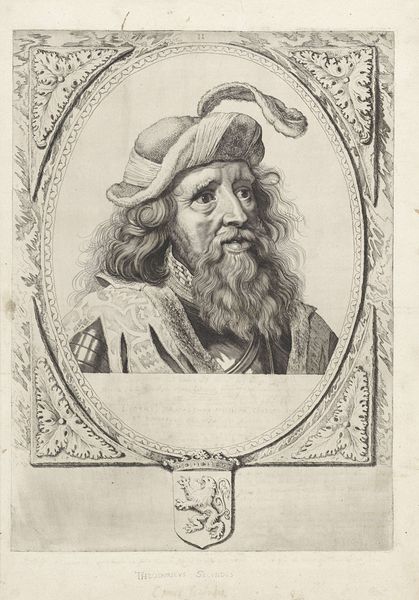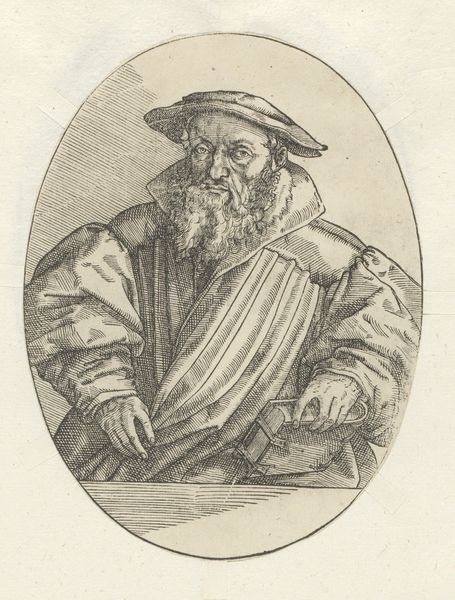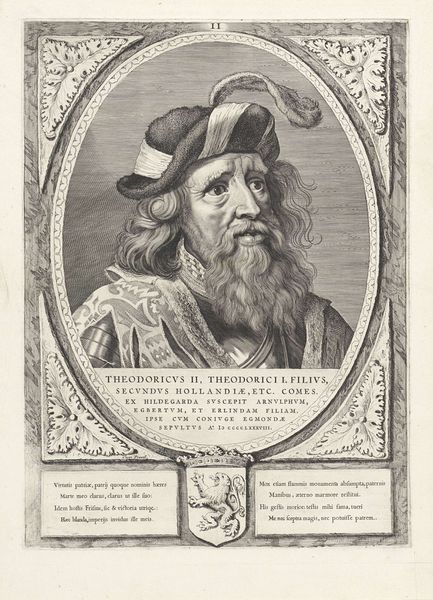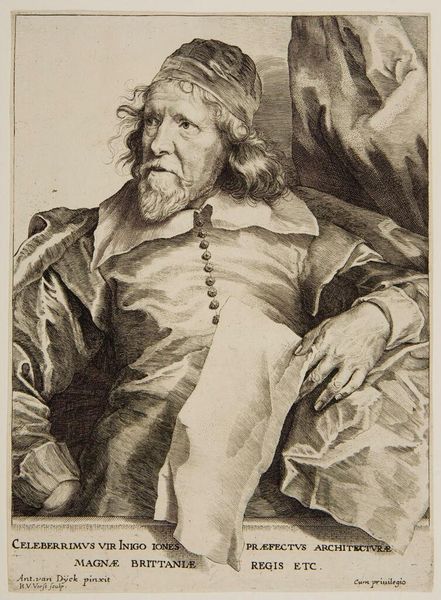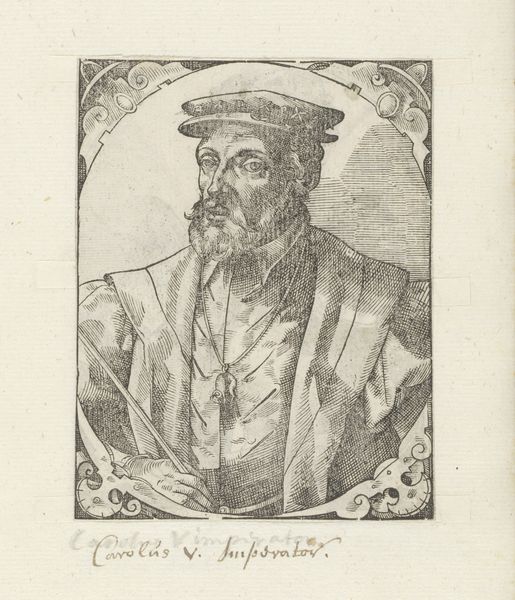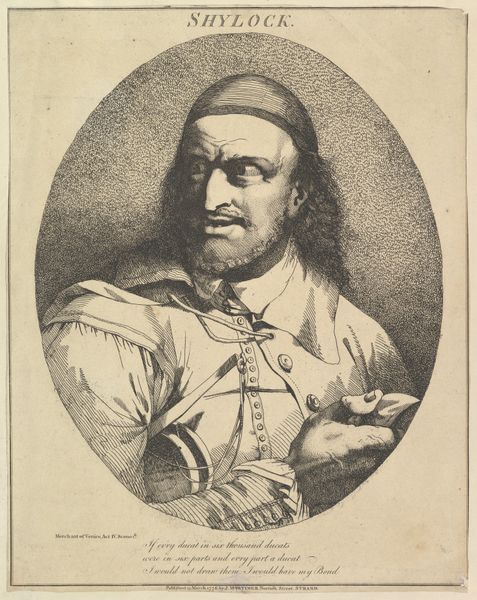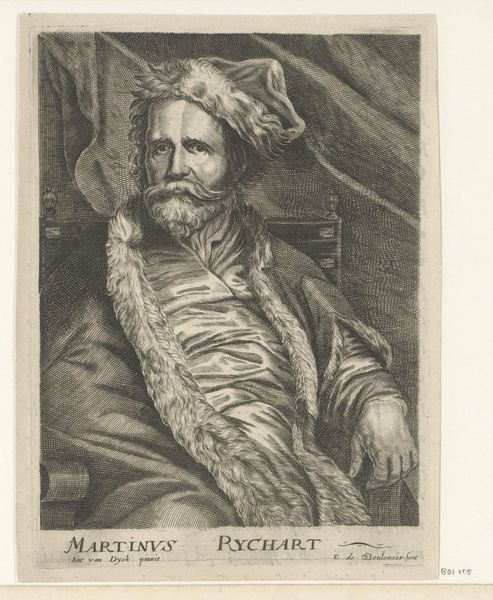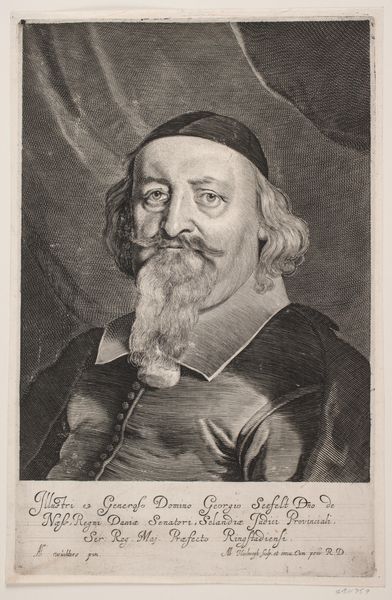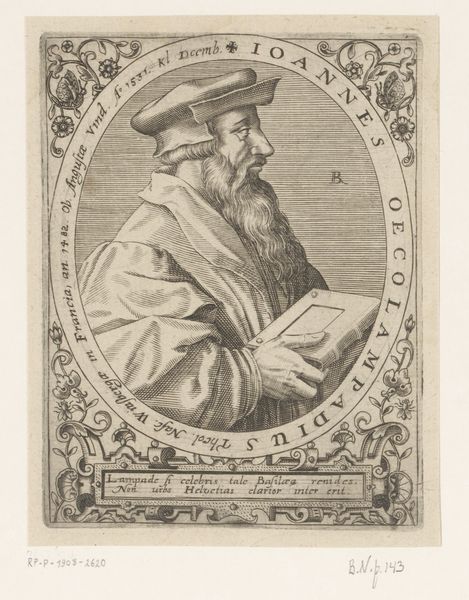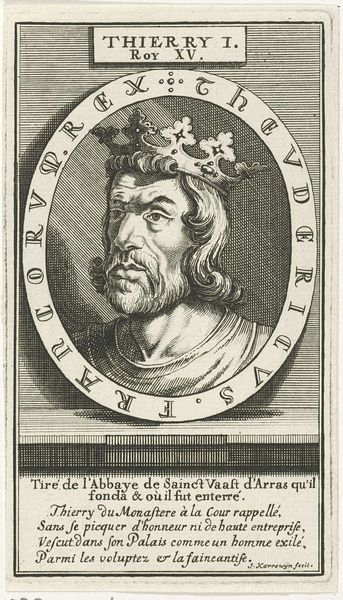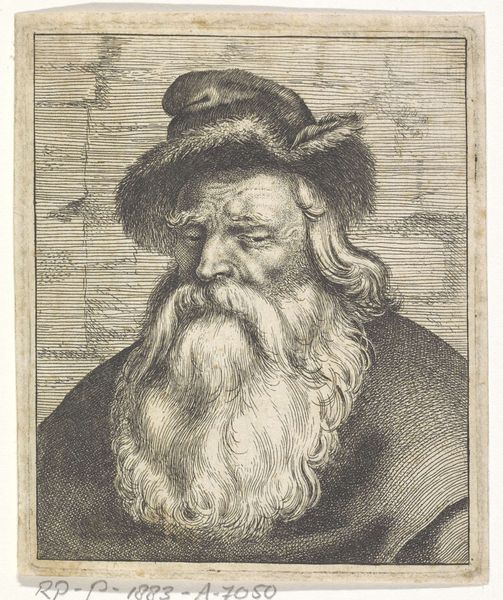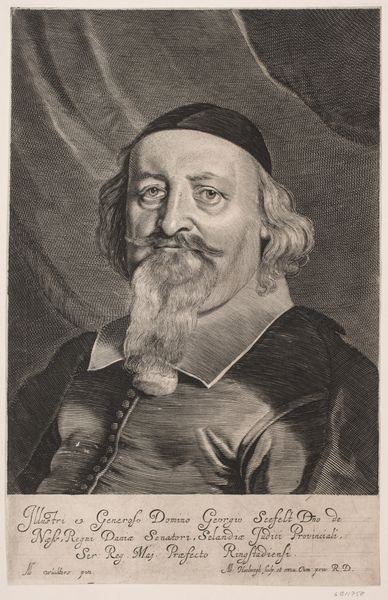
Inigo Jones (from Inigo Jones's "The most notable Antiquity of Great Britain vulgarly called Stone-heng on Salisbury Plain," 1655) 1655
0:00
0:00
drawing, print, engraving
#
portrait
#
drawing
#
baroque
#
dutch-golden-age
# print
#
men
#
engraving
Dimensions: Plate: 8 1/16 × 5 5/16 in. (20.5 × 13.5 cm) Sheet: 8 3/8 × 5 11/16 in. (21.3 × 14.4 cm)
Copyright: Public Domain
Editor: This is "Inigo Jones," a 1655 engraving by Wenceslaus Hollar. It's housed at the Metropolitan Museum of Art. What strikes me immediately is the intricate detail achieved through the medium of engraving, and how the subject's gaze pulls you in. What stands out to you about this portrait? Curator: The formal composition immediately arrests my attention. Observe how Hollar masterfully uses line and shadow to define Jones's face and attire within the oval frame. Consider the varying densities of cross-hatching: denser in the shadows to convey depth, lighter in the highlights, modeling the form. The artist's employment of line invites rigorous semiotic interrogation. What is the interplay of lines here? Editor: I notice the contrast. The detailed facial features compared to the broader strokes defining his clothing, is that intentional, maybe to focus on the man and less on his status? Curator: Perhaps. But also consider the materiality of the engraving process itself. The precise, controlled lines are indicative of the burin's interaction with the copper plate. Further, observe how the light reflects from the polished areas, causing it to seem less textured. Is it correct to believe that is the most important attribute of this composition? How does this material transformation inflect our experience of Jones's portrait? Editor: It gives the image a richness despite its apparent simplicity, which echoes baroque portraiture in its complexity, even with limited means. This play of light feels very intentional now that you mention it. Curator: Precisely. Hollar coaxes a subtle play of light and shadow to enhance our viewing experience of the figure portrayed, and that speaks to the very heart of form as an act of visual rhetoric. Editor: I’ve learned a lot today about looking more deeply at composition and technique and the artistic intent in a Baroque piece like this. Curator: Indeed, considering both the intentional use of form and the materiality with which artists imbue works, will always lead us to unexpected discoveries.
Comments
No comments
Be the first to comment and join the conversation on the ultimate creative platform.
